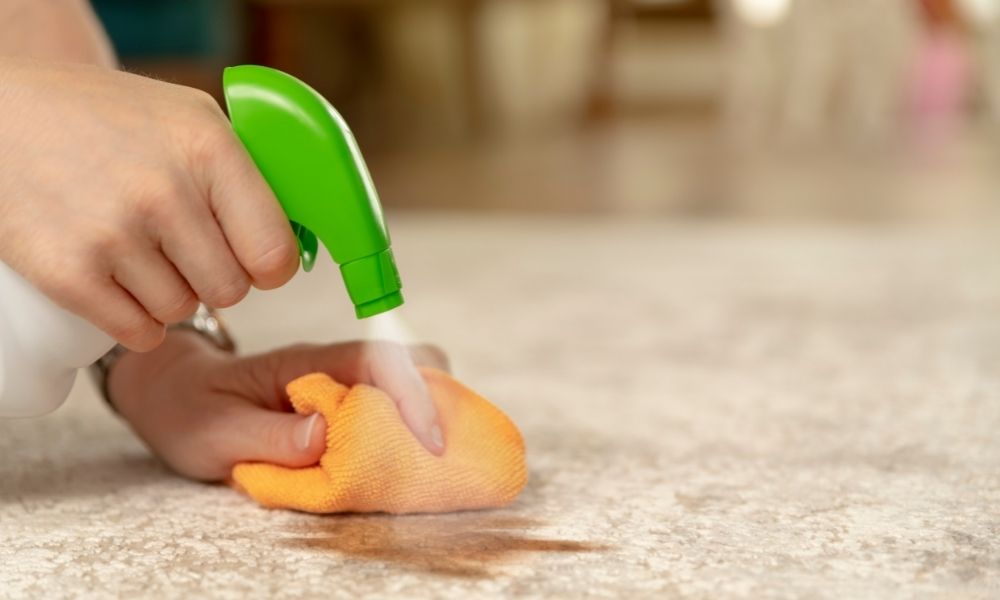When choosing carpets for your home or workplace, there are many factors that you should take into account before buying, to ensure that you don’t run into problems. In this post, we will be telling you about some of the most common carpet problems and guiding you with some simple solutions.
Common carpet problems
We will cover some of the most common carpet problems including:
- Colour matching carpets
- Using carpet samples
- Fading on wool carpets
- Carpet stains and soiling
- Pilling problems
- Flattening and indentations
- Pile reversal
- Carpets shedding and sprouting
- Carpet loops
- Carpet delamination
Problems with colour matching carpets
Carpet problems arising from colour matching can occur because carpets are produced in batches (or creels). Each batch produced can range from 500 m2 to 3000 m2 in size.
During carpet production, the dying process will be followed using the same “recipe” every time, but it can still produce slight variations in colour. The batch is always matched back to the master sample and the dyer will check to ensure that any differences are within a commercial allowance.
This does not cause problems if you are having different carpets in each room, or having carpets installed throughout in one go, but if you are updating them one by one you may run into colour matching carpet problems. You need to be aware that you may have slightly different colour shades, even when you are buying the same make of carpet from the same supplier.
The same is true if you are looking at carpet samples to make a final choice. These may not produce the exact same shade as the carpet you will receive, and should only be used as a guide.
Carpet problems due to stains and soiling
No matter how careful we all are, carpet stains from spills and soiling are inevitable, but many can be remedied.
In the first instance, be mindful of colour, pile and patterns when choosing carpets for each room. Patterned carpets hide a multitude of sins and might be a good choice in children’s and family rooms. Light colours may not be suitable in hallways and staircases if they have a high footfall.
Many carpets are dirt and stain resistant which will reduce the problem happening in the first place.
Have you ever noticed dark marks on carpets around the edges close to the skirting boards? This is caused by a build-up of dust and might be caused by ill-fitting skirting boards. Similarly, gaps in floorboards and under door frames can cause draughts and will allow dust to travel and cause build-up when it settles. To prevent this from happening, have your carpet supplier check for potential problems before fitting, and once fitted, hoover the edges of your carpet regularly with a slim attachment to remove all dust.
Addressing possible carpet problems before fitting is better than trying to find solutions after a stain has occurred.
Drink spills and pet soiling are some of the most common carpet problems. These should be treated quickly for the most effective stain removal. Blot the spill with a dry, white cloth using all your weight to take up as much of the spill as possible.
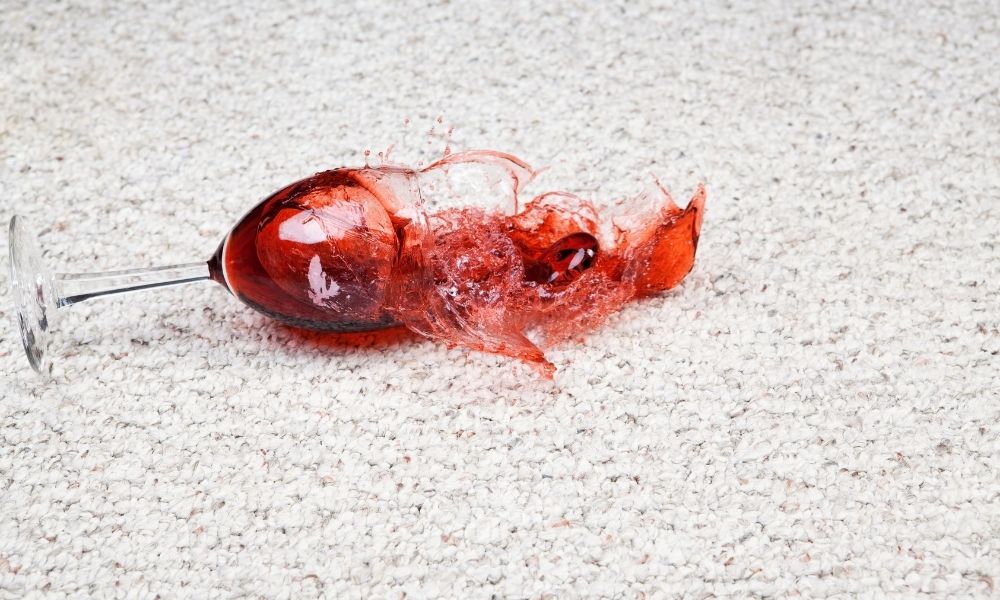
You should always follow the manufacturer’s instructions to clean any stains. Each type of carpet has different cleaning solutions, and DIY carpet shampooers can sometimes cause damage.
If in doubt, contact a professional carpet cleaning company who will be able to clean even the most stubborn stains. We recommend Conway Cleaning to our customers.
We supply a vast range of bleach-cleanable carpets which can be cleaned using a solution of one part bleach with six parts warm water.
Cormar Carpets have a useful article about how to clean stains and spillages which is worth looking at if you need more information.
Pilling problems with carpet
Using the wrong type of hoover for your carpet type can cause pilling problems. For example, loop pile carpets should be vacuumed with a suction-only cylinder hoover with no beater bar or brush. For other carpet types, an upright hoover with the beater bar and brush turned on is best. As always, check the manufacturer’s recommendations to reduce the risk of pilling.
Here is an example of carpet pilling which Craig noticed and was able to advise the customer how to resolve the issue.
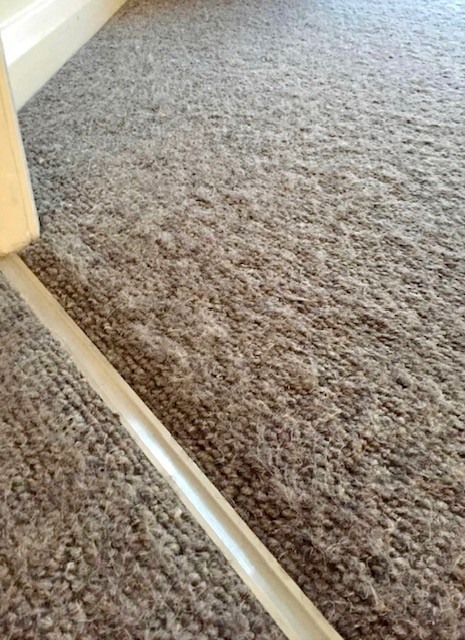
Cormar Carpets offer more tips for vacuuming different types of carpet if you’d like further information.
Carpet problems with flattening
All carpets will flatten over time due to normal wear and tear. Again this is where your carpet supplier can give you the best advice on which carpets and underlay are most suitable for certain areas. They will be able to take into account the carpet’s pile, tuft density, weight, etc., and match it to something that is best suited to use.
Carpet problems caused by indentations
Indentations in your carpet caused by heavy furniture can be annoying, especially if you want to change your room around. It is likely that the underlay will also be flattened, and even the underside of your carpet.
The solution to this carpet problem can sometimes be dealt with by normal vacuuming, and teasing the pile back up with a damp cloth. To prevent indentations from happening you can buy specially manufactured furniture cups which fit under the legs of chairs and tables, distributing the weight more evenly.
Pile reversal problems
Customers often ask Craig how to reduce the risk of pile reversal for their carpets. It is usually velvet, cut or soft twist pile carpets which suffer from pile reversal, so it’s worth considering other types of carpet instead. A loop pile would be a great choice, or if you prefer a twist then try selecting a shorter pile with a minimum two ply yarn in a 80% wool & 20% nylon Wilton construction.
Here are examples of pile reversal issues.
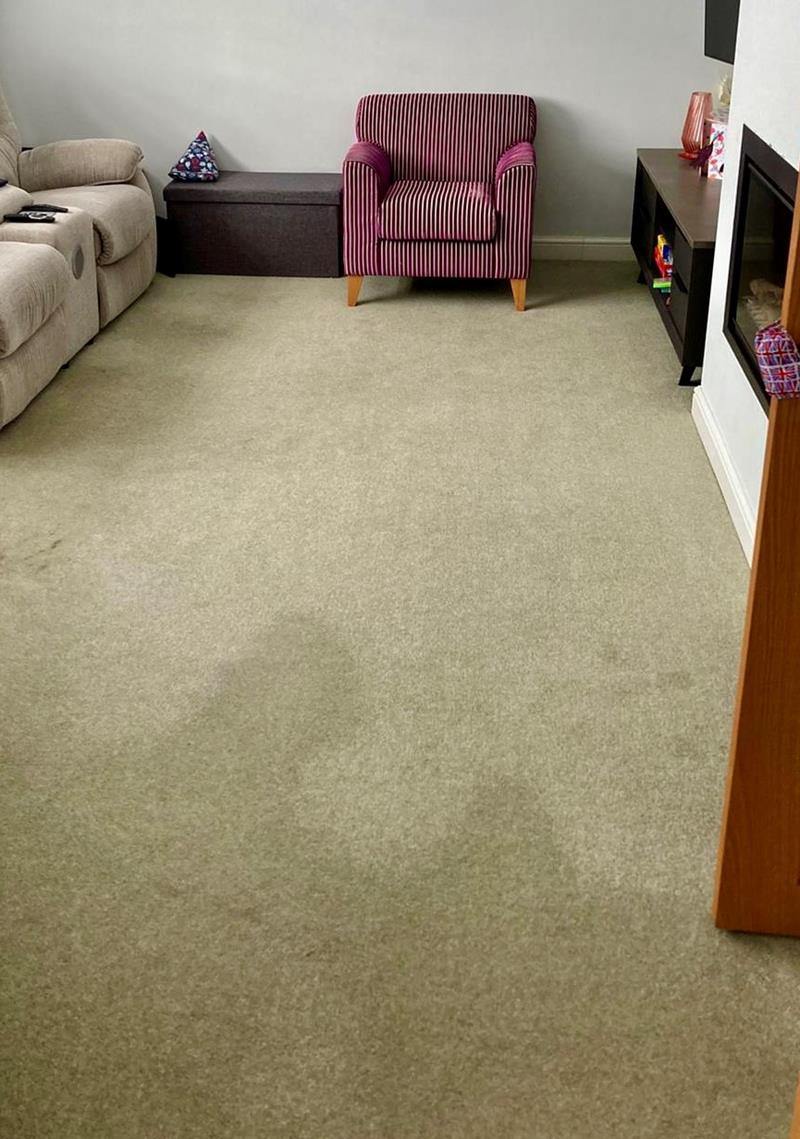
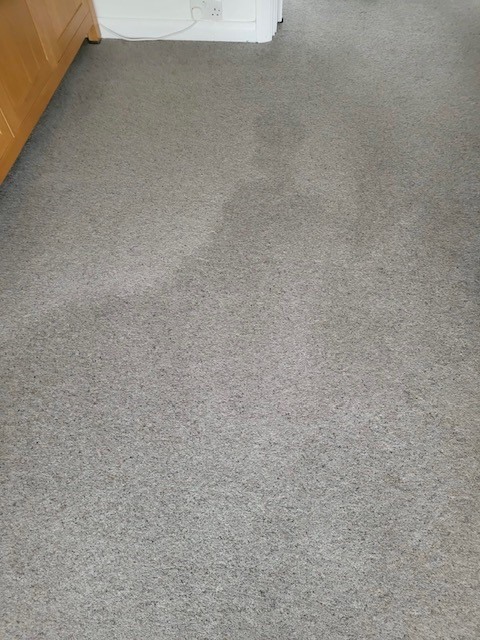
Do woollen carpets fade?
Yes, woollen carpets do fade. To prevent fading from becoming a carpet problem in your home, take careful consideration of the colour and positioning of the carpet.
Fading occurs when the carpet is exposed to the ultraviolet light of natural daylight, even more so if it is exposed to direct rays of sunlight.
Problems with new carpets shedding
All carpets shed some of their fibres, especially during and after the carpet fitting process. Wool carpets will shed more, and in particular cut pile carpets will shed the most. This is nothing to worry about. Carpets are made with excess fibres, and the fluff you notice can simply be vacuumed up. It usually settles down very quickly, however some carpets can shed excess fibres for more than a year. If you experience this then we recommend you increase the amount of times you hoover your carpet.
Rectify carpet loop problems easily
If you have chosen a looped pile, it is quite possible that you might encounter the carpet problem of a pulled loop. This is usually caused by a sharp object catching a loop and dragging more in the process.
Some manufacturers will be able to re-stitch the loop, or you may have a local specialist who can do it. Cleanfix Carpets in Pagham offer this service, for example.
Sprouting
Similarly, you may notice tufts and this too has the simple solution of trimming the pile to the same length. Don’t be tempted to pull at the tuft or you may encounter more carpet problems.
Carpet delamination problems
Most carpets are made in layers, where the yarn is stitched onto a backing and then bonded to further backing layers. If these layers separate from each other then it’s called delamination and you may notice bubbles in the main walkways, and frays or lifting on the seams. Here is an example of delamination which one of Craig’s customers reported.
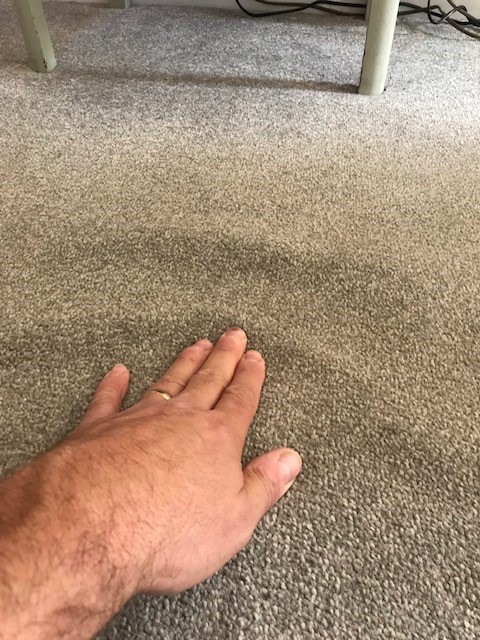
You can reduce the risk of this happening by cleaning up spills immediately and avoid making the carpet wet. You could choose a woven carpet such as a Wilton or Axminster instead of a secondary backed product.
Find out more
We hope that you have found this post useful as we have included all of the common carpet problems that many people encounter. We hope it will solve some of your own carpet problems and offer the best solutions.
If you’d like to speak to Craig Sargeant for advice on how to avoid carpet problems then you can email him using sales@sargeantcarpets.co.uk or send him a WhatsApp message on 07789 172303.
Other carpet guides
We have written a range of articles to help you choose the right flooring for your home, including:

